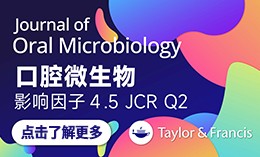Neurotoxicity Research ( IF 3.7 ) Pub Date : 2023-03-03 , DOI: 10.1007/s12640-023-00638-3 Natalia Barraza-Núñez 1 , Ramón Pérez-Núñez 1 , Belén Gaete-Ramírez 1 , Alejandra Barrios-Garrido 1 , Christian Arriagada 2 , Karen Poksay 3 , Varghese John 4 , Jean-Vianney Barnier 5 , Ana María Cárdenas 6 , Pablo Caviedes 1, 7
|
|
Down syndrome (DS) is characterized by the trisomy of chromosome 21 and by cognitive deficits that have been related to neuronal morphological alterations in humans, as well as in animal models. The gene encoding for amyloid precursor protein (APP) is present in autosome 21, and its overexpression in DS has been linked to neuronal dysfunction, cognitive deficit, and Alzheimer’s disease-like dementia. In particular, the neuronal ability to extend processes and branching is affected. Current evidence suggests that APP could also regulate neurite growth through its role in the actin cytoskeleton, in part by influencing p21-activated kinase (PAK) activity. The latter effect is carried out by an increased abundance of the caspase cleavage-released carboxy-terminal C31 fragment. In this work, using a neuronal cell line named CTb, which derived from the cerebral cortex of a trisomy 16 mouse, an animal model of human DS, we observed an overexpression of APP, elevated caspase activity, augmented cleavage of the C-terminal fragment of APP, and increased PAK1 phosphorylation. Morphometric analyses showed that inhibition of PAK1 activity with FRAX486 increased the average length of the neurites, the number of crossings per Sholl ring, the formation of new processes, and stimulated the loss of processes. Considering our results, we propose that PAK hyperphosphorylation impairs neurite outgrowth and remodeling in the cellular model of DS, and therefore we suggest that PAK1 may be a potential pharmacological target.
中文翻译:

p-21 活化激酶 (PAK) 的药理学抑制可恢复唐氏综合症细胞模型中受损的神经突生长和重塑
唐氏综合症 (DS) 的特征是 21 号染色体的三体性以及与人类和动物模型中的神经元形态学改变相关的认知缺陷。编码淀粉样前体蛋白 (APP) 的基因存在于常染色体 21 中,其在 DS 中的过度表达与神经元功能障碍、认知缺陷和阿尔茨海默病样痴呆有关。特别是,神经元扩展过程和分支的能力受到影响。目前的证据表明,APP 还可以通过其在肌动蛋白细胞骨架中的作用来调节神经突生长,部分是通过影响 p21 激活激酶 (PAK) 活性。后一种效应是通过增加 caspase 裂解释放的羧基末端 C31 片段的丰度来实现的。在这项工作中,使用名为 CTb 的神经元细胞系,其源自 16 三体小鼠(人类 DS 的动物模型)的大脑皮层,我们观察到 APP 的过度表达、半胱天冬酶活性升高、APP C 末端片段的裂解增加以及 PAK1 磷酸化增加。形态分析表明,用 FRAX486 抑制 PAK1 活性会增加神经突的平均长度、每个 Sholl 环的交叉数、新过程的形成并刺激过程的损失。考虑到我们的结果,我们提出 PAK 过度磷酸化会损害 DS 细胞模型中的神经突生长和重塑,因此我们认为 PAK1 可能是一个潜在的药理学靶点。增加 APP C 端片段的切割,并增加 PAK1 磷酸化。形态分析表明,用 FRAX486 抑制 PAK1 活性会增加神经突的平均长度、每个 Sholl 环的交叉数、新过程的形成并刺激过程的损失。考虑到我们的结果,我们提出 PAK 过度磷酸化会损害 DS 细胞模型中的神经突生长和重塑,因此我们认为 PAK1 可能是一个潜在的药理学靶点。增加 APP C 端片段的切割,并增加 PAK1 磷酸化。形态分析表明,用 FRAX486 抑制 PAK1 活性会增加神经突的平均长度、每个 Sholl 环的交叉数、新过程的形成并刺激过程的损失。考虑到我们的结果,我们提出 PAK 过度磷酸化会损害 DS 细胞模型中的神经突生长和重塑,因此我们认为 PAK1 可能是一个潜在的药理学靶点。



























 京公网安备 11010802027423号
京公网安备 11010802027423号